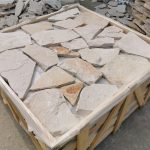Introduction
In the realm of architecture and design, the facade of a building serves as its face, creating a lasting impression on viewers and passersby. The choice of materials for a building's exterior plays a crucial role in defining its aesthetic appeal and overall character. In recent years, cultured stone facade has emerged as a popular choice among architects and designers seeking to achieve a sophisticated and elegant look for their projects. This article explores the various aspects of cultured stone facade, including its characteristics, benefits, installation methods, and design possibilities.
Characteristics of Cultured Stone Facade
Cultured stone, also known as manufactured stone or faux stone, is a lightweight, versatile building material designed to replicate the appearance of natural stone. It is composed of a mixture of Portland cement, natural aggregates, and iron oxide pigments, which are cast in molds to create realistic stone textures and shapes. Cultured stone is available in a wide range of colors, sizes, and styles, allowing architects and designers to achieve a customized look for their projects.
https://www.fs-slate.com/roofing-slate/ of the key advantages of cultured stone facade is its durability and weather resistance. Unlike natural stone, which can be prone to cracking, chipping, and fading over time, cultured stone is engineered to withstand the elements and maintain its appearance for years to come. Additionally, cultured stone is lightweight and easy to handle, making it a cost-effective and efficient choice for both new construction and renovation projects.
Benefits of Cultured Stone Facade
There are several benefits to using cultured stone facade in architectural design. One of the primary advantages is its versatility in terms of design possibilities. Cultured stone can be used to create a wide range of architectural styles, from traditional to modern, and can be customized to match the aesthetic vision of the designer. Whether used as a primary cladding material or as an accent feature, cultured stone can add depth, texture, and visual interest to a building's facade.
Another benefit of cultured stone facade is its cost-effectiveness compared to natural stone. Cultured stone is typically more affordable to purchase and install, making it a budget-friendly option for projects with limited resources. Additionally, the lightweight nature of cultured stone reduces the need for structural support, further lowering construction costs and simplifying the installation process.
In terms of maintenance, cultured stone facade requires minimal care to preserve its appearance. Unlike natural stone, which may require regular sealing and cleaning to prevent staining and deterioration, cultured stone can be easily cleaned with soap and water to remove dirt and debris. This low-maintenance quality makes cultured stone an attractive choice for building owners seeking a durable and long-lasting facade solution.
Installation Methods of Cultured Stone Facade
The installation of cultured stone facade involves several key steps to ensure a successful and lasting result. The first step is to prepare the surface of the building for the application of the cultured stone. This may involve removing existing cladding materials, such as siding or stucco, and installing a weather-resistant barrier to protect the underlying structure from moisture and water infiltration.
Once the surface is prepared, the cultured stone panels are attached to the building using a combination of adhesive, mortar, or mechanical fasteners. The panels are typically interlocked and staggered to create a seamless and cohesive appearance. Grout may be used to fill in the gaps between the panels and enhance the look of the facade.
After the cultured stone panels are installed, the facade may be sealed with a protective coating to enhance its durability and weather resistance. This coating can help prevent water penetration, UV damage, and color fading, ensuring that the cultured stone maintains its appearance over time. Regular inspection and maintenance of the facade can help identify any issues early on and prevent costly repairs down the line.
Design Possibilities with Cultured Stone Facade
Cultured stone facade offers endless design possibilities for architects and designers looking to create distinctive and visually striking buildings. The wide range of colors, textures, and styles available in cultured stone allows for creative expression and customization to suit the unique requirements of each project.
One popular design option is to combine cultured stone with other facade materials, such as wood, metal, or glass, to create a harmonious and dynamic look. Cultured stone can be used as an accent feature to highlight architectural details, such as window surrounds, columns, or entryways, adding depth and interest to the building's facade.
Another design trend is to use cultured stone in innovative ways, such as creating geometric patterns, modern abstract shapes, or textured finishes. By experimenting with different installation techniques and configurations, designers can push the boundaries of traditional stone cladding and create one-of-a-kind facades that stand out from the crowd.
Cultured stone facade can also be used to evoke a sense of history and tradition in architectural design. By selecting a weathered or aged finish, designers can give the impression of a centuries-old building with a rich patina and timeless appeal. This nostalgic aesthetic adds character and charm to modern structures, creating a sense of warmth and authenticity.
Conclusion

Cultured stone facade is a versatile and durable building material that offers numerous benefits for architects, designers, and building owners. From its realistic appearance and weather-resistant properties to its cost-effectiveness and design flexibility, cultured stone provides a practical and aesthetically pleasing solution for a wide range of architectural projects.
By understanding the characteristics, benefits, installation methods, and design possibilities of cultured stone facade, architects and designers can harness the full potential of this innovative building material to create stunning and enduring facades that enhance the beauty and functionality of their buildings. Whether used as a primary cladding material or as an accent feature, cultured stone facade has the power to transform ordinary structures into architectural masterpieces that captivate the imagination and inspire admiration for generations to come.
